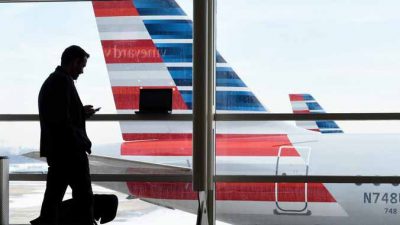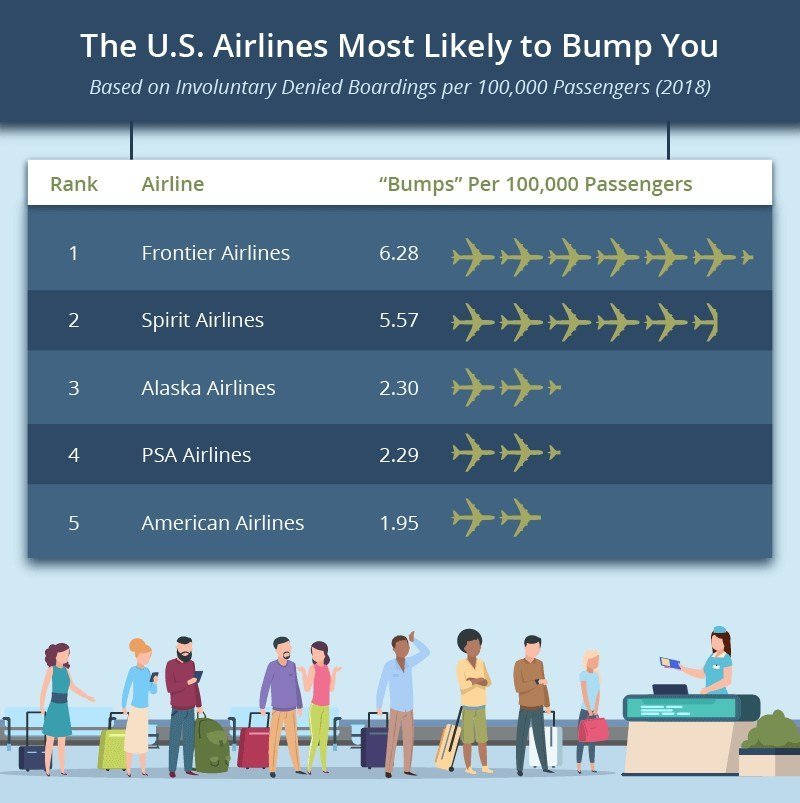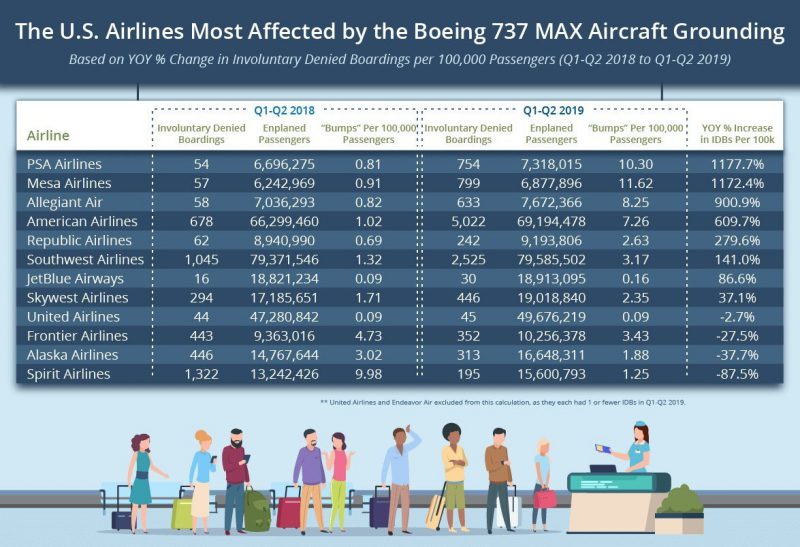Which US Airlines are Most Likely to Bump Passengers?
While getting bumped from a flight is always a risk for flyers, some airlines are better at managing their loads than others
November 19, 2019


In a recent study, Upgraded Points explored the airlines most likely to bump passengers from flights: a process the industry calls involuntary denied boarding (IDB), or airline bumps. Using solid industry data from 2018, and in light of the effects of the Boeing 737 MAX Aircraft grounding controversy, the final results were a bit surprising.
The U.S. airlines most likely to bump you, based on involuntary denied boardings per 100,000 passengers:

The U.S. airlines most affected by the Boeing 737 MAX Aircraft Grounding:

The study looked at current data released by the Bureau of Transportation Statistics, which keeps detailed airline-related statistics on a variety of topics for each full year. It examined the year-over-year changes in both voluntary and involuntary denied boardings from the top U.S. airlines to see which have the highest number of bumped passengers. These numbers represent the number of IDBs per 100,000 passengers, per airline. Some results from the study are included below.
Airlines Most Likely to Bump Passengers
Just looking at the raw number of passengers bumped is not always the most accurate way to calculate which airline is more likely to bump its passengers. For instance, although American Airlines and Southwest Airlines have the highest number of actual bumped passengers, their volume of enplaned passengers is rather high altogether. This then places passengers’ overall changes of being bumped by American and Southwest as statistically low.
Only 1.95 American Airlines passengers were bumped for every 100,000 who traveled in 2018. Southwest bumped only 1.5 passengers during the same time period. In contrast, Spirit Airlines had the highest number of IDBs based on raw data, but due to their higher volume of passengers, their ratio of bumped passengers is still better than other carriers, such as Frontier Airlines.
The highest IDBs based on passengers bumped and overall volume of passengers is Frontier Airlines, by a significant margin. Based on the data, Frontier bumped 6.28 passengers per 100,000. Some of the raw data analyzed for the top four worst airlines for bumping passengers is below. Delta Airlines, however, holds the sweet spot with only 22 bumps in 2018. Out of over 138 million passengers, only .02 per 100,000 Delta passengers were involuntarily bumped. Frontier Airlines: 6.28 passengers per 100K; 1,219 total IDBs for 2018
• Spirit Airlines: 5.57 passengers per 100K; 1,529 total IDBs for 2018
• Alaska Airlines: 2.30 passengers per 100K; 743 total IDBs for 2018
• PSA Airlines: 2.29 passengers per 100K; 309 total IDBs for 2018
Those airlines that are the least likely to inconvenience passengers with IDBs are also explored in the study.
Boeing 737 MAX Grounding Effects
Generally speaking, getting bumped is becoming less common for airlines. Rates peaked in 2016 and early 2017, though there was a significant drop in late 2017. With the grounding of the Boeing 737 MAX Aircrafts in March of 2019 however, there was a great influx of overbooking that resulted in an almost doubled rate of bumps in the first half of 2019.
PSA Airlines and Mesa Airlines were the U.S. airlines hardest hit by the grounding of Boeing 737 Max Aircrafts. In both cases, their Q1-2 bump rates shot up by over 1,000 percent and resulted in over 10 people bumped per 100,000 passengers.
Close behind were Allegiant Air and American Airlines, both of which experienced a bump rate increase of over 500 percent.
However, not every airline was negatively impacted. United, Frontier, Alaska, and Spirit Airlines all experienced a drop in involuntary denied boardings since Boeing 737 MAX aircrafts were grounded.
These airlines appeared to either not be affected by the grounding of those aircrafts or they were able to quickly compensate for the additional passengers that booked tickets on their airlines.




